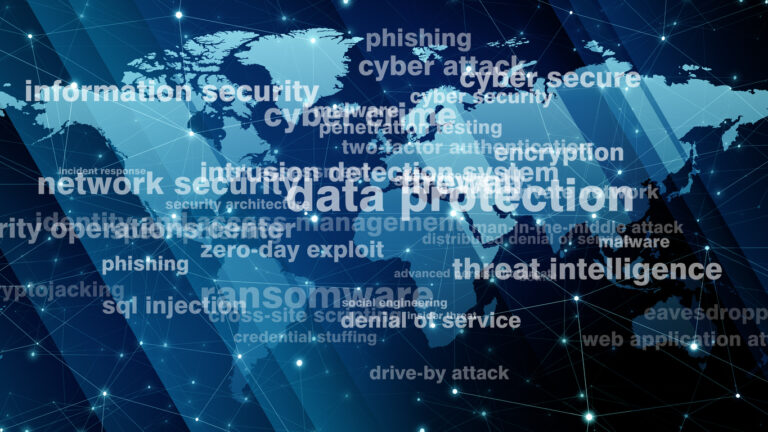Once upon a time, the cost of doing business was merely staying ahead in a competitive market. Today, the price of operating is surviving in a digital warzone. In today’s rapidly evolving digital landscape, we’ve embedded our most valuable assets in a terrain more dangerous than any physical battlefield—the internet. Our heavy reliance on software and technology only exacerbates the risks.
It’s time for board members and executives to wake up and realise that the internet is not just a tool for convenience and growth; it’s a hostile environment where every interaction is fraught with risk. The price of entry into this warzone is high, but the cost of ignoring it is even higher. Here’s why we need to change our mindset and what needs to be done.
1. Recognise the Internet as a Hostile Environment
Current Misconception:
- Complacency: Many executives still view cybersecurity as an IT issue rather than a critical business concern. This complacency can be fatal in a landscape where cyber threats are sophisticated, persistent, and evolving.
Reality Check:
- Persistent Threats: The internet is a battleground with cybercriminals, state-sponsored hackers, and even competitors constantly probing for weaknesses. Unlike physical attacks, cyber threats are relentless and can strike from anywhere in the world, at any time. According to Cybersecurity Ventures, cybercrime will cost the world $10.5 trillion annually by 2025, up from $3 trillion in 2015 (The Star) (Wikipedia).
- Sophistication of Attacks: Modern cyber-attacks are highly sophisticated, often involving advanced techniques like AI-driven malware, zero-day exploits, and complex social engineering schemes. A report by the Ponemon Institute found that 54% of organisations experienced one or more successful cyber-attacks that compromised data and/or IT infrastructure (Big Agile).
2. Move Beyond Compliance to Comprehensive Security
Current Approach:
- Reactive Compliance: Many organisations focus on meeting regulatory requirements rather than addressing actual security threats. This reactive approach often leads to a false sense of security and unpreparedness for real-world attacks.
Strategic Shift:
- Proactive Risk Management: Shift from a compliance-first mindset to a risk-first mindset. This means being more proactive in understanding and mitigating risks specific to your organisation and the domain you operate, not just those outlined by regulatory bodies. Research by Gartner indicates that by 2025, 60% of organisations will use cybersecurity risk as a primary determinant in conducting third-party transactions and business engagements (The Star).
- Invest in Forward-Thinking Security: Allocate resources to predictive technologies and advanced analytics that can anticipate and neutralise threats before they materialise. This includes adopting quantum-resistant encryption and leveraging AI for real-time threat detection.
3. Empower Your IT Teams to Think Like Attackers
Current Shortfall:
- Defensive Posture: IT teams are often trained to defend against known threats rather than thinking proactively about how they might be attacked. This defensive posture limits their ability to anticipate and mitigate novel attack vectors.
Transformative Approach:
- Red Team Exercises: Regularly conduct red team exercises where IT teams simulate attacker tactics to identify and patch vulnerabilities. This proactive approach can reveal weaknesses that standard defensive measures might miss. A study by IBM found that organisations with an incident response team that also tested their incident response plan using tabletop exercises or simulations had an average cost of a breach that was $2 million lower than those that did not (Big Agile).
- Continuous Learning: Invest in continuous education and training for your IT teams to keep them abreast of the latest threat intelligence and attack techniques. Encourage a mindset of curiosity and vigilance.
4. Create a Culture of Security Awareness Across All Levels
Current Issue:
- Isolated Responsibility: Cybersecurity is often viewed as the responsibility of the IT department alone, leaving other employees unaware of their role in protecting the organisation. For many employees, cybersecurity is often a compliance requirement they need to get through once a year.
Cultural Change:
- Inclusive Security Training: Implement organisation-wide security training programs that effectively engage and educate all employees about their role in maintaining security. This includes recognising phishing attempts, using strong passwords, and reporting suspicious activities. According to a report by Verizon, 94% of malware is delivered via email, making employee awareness and training critical (The Star).
- Leadership by Example: Executives must lead by example, demonstrating a commitment to cybersecurity in their daily actions and decisions, as part of how they “Protect The House”–a powerful metaphor for safeguarding the core foundation and well-being of your business. This top-down approach ensures that security becomes a core value embedded in the organisational culture.
5. Enhance Transparency and Accountability in Cybersecurity
Current Practice:
- Opaque Reporting: Cybersecurity incidents are often underreported or downplayed, which hinders organisational learning and resilience.
New Paradigm:
- Open Incident Reporting: Foster a culture of transparency where cybersecurity incidents are openly reported and analysed. This approach not only builds trust but also facilitates collective learning and improvement.
- Accountability Frameworks: Establish clear accountability frameworks where responsibilities for cybersecurity are well-defined and enforced. Ensure that every level of the organisation understands their role in protecting digital assets.
Conclusion
The internet is no longer a neutral territory. It is a warzone, and your organisation is under constant threat. Executives must transform their mindset and approach to cybersecurity by recognising the internet’s hostile nature, moving beyond compliance, empowering IT teams, fostering a culture of security, and enhancing transparency and accountability. This is not just an IT issue; it’s a business imperative. The time to act is now. Protect your most valuable assets before it’s too late.
Prepare for Quantum Computing: Quantum computing is on the horizon, closer than you might think, and promises to be a game changer in both positive and negative ways. While it holds the potential for revolutionary advancements, it also poses significant risks to current cryptographic systems. Executives must start preparing now by exploring and determining when they will commence investing in quantum-resistant technologies and updating their security frameworks to withstand the future threats posed by quantum capabilities.
Learn from Recent Incidents: The recent CrowdStrike incident serves as a stark reminder of the vulnerabilities we face. In July 2024, a faulty update led to widespread disruption, affecting millions of devices globally and highlighting the need for robust testing and proactive risk management. This incident underscores the importance of staying ahead of potential threats and ensuring that your organisation is prepared for the unexpected (The Star) (Big Agile).
The internet is our new frontier. Approach it with the gravity and respect it warrants. The cost of entry into this warzone is steep, but the price of neglect is catastrophic. Now is the time to rethink and integrate cybersecurity into your overall risk management strategy. Remember, these digital tools are the lifeblood of our business operations.
Empowering Your Cybersecurity Journey
The first step towards a more resilient cybersecurity posture is transforming your mindset and attitude. Recognise that cybersecurity is a critical business concern, not just an IT issue. Every person in your organisation is exposed the risks, making cybersecurity a shared responsibility. Embrace this perspective and make it part of your risk management mindset and strategy. It is your people that will make the difference in how effective you are.
You don’t have to undertake this journey alone. Reach out to us for guidance on enhancing your approach and strategy to managing all risks. Let’s start a conversation that matters and work together to ‘Protect the House,’ your organisation in this digital age. Be proactive, be informed, and be resilient. The future depends on it.




